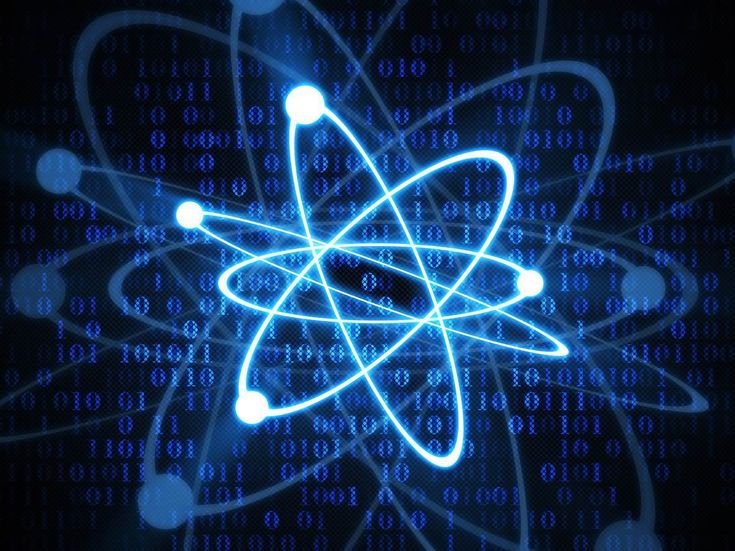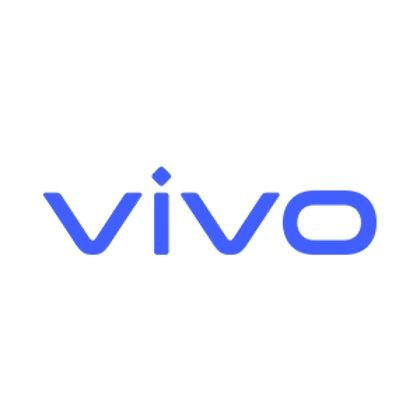
Data Science Projects for Beginners: A Simple Guide to Getting Started
Data science is an exciting field that combines mathematics, statistics, programming, and domain expertise to extract insights from data. If you’re new to data science, working on projects is one of the best ways to learn and build your skills. In this article, we’ll explore a range of data science projects perfect for beginners, helping you understand key concepts and gain practical experience.
Why Start with Projects?
Before diving into specific projects, it’s important to understand why projects are beneficial for beginners in data science:
- Hands-on Experience: Projects allow you to apply theoretical knowledge in a practical setting, helping you understand how different concepts work together.
- Portfolio Building: As you complete projects, you can showcase them in your portfolio, which is crucial for landing internships or jobs.
- Skill Development: Projects help you develop essential skills such as data cleaning, analysis, visualization, and machine learning.
Now, let’s explore some beginner-friendly data science projects.
1. Exploratory Data Analysis (EDA) on a Public Dataset
Objective: Understand the structure of a dataset and identify patterns, anomalies, and insights using visual and statistical techniques.
Overview: Exploratory Data Analysis (EDA) is a fundamental step in any data science project. It involves examining datasets to summarize their main characteristics, often using visual methods. For this project, choose a simple public dataset, such as the Titanic dataset, Iris dataset, or any dataset from platforms like Kaggle or the UCI Machine Learning Repository.
Steps:
- Data Cleaning: Handle missing values, correct data types, and remove duplicates.
- Descriptive Statistics: Calculate mean, median, variance, and standard deviation for numerical columns.
- Data Visualization: Create histograms, box plots, scatter plots, and heatmaps to explore data distributions and relationships between variables.
- Conclusion: Summarize your findings, highlighting any interesting patterns or anomalies.
Tools: Python, Pandas, Matplotlib, Seaborn
2. Sentiment Analysis of Product Reviews
Objective: Analyze customer reviews to determine whether the sentiment is positive, negative, or neutral.
Overview: Sentiment analysis is a common task in natural language processing (NLP). It involves analyzing text data to determine the sentiment expressed by the writer. For this project, you can use a dataset of product reviews from websites like Amazon or Yelp.
Steps:
- Data Collection: Obtain a dataset of product reviews, including text and ratings.
- Text Preprocessing: Clean the text data by removing stopwords, punctuation, and performing tokenization.
- Feature Extraction: Convert text data into numerical features using techniques like Bag of Words or TF-IDF.
- Model Building: Train a machine learning model (e.g., logistic regression or Naive Bayes) to classify the sentiment of the reviews.
- Evaluation: Test the model on a separate dataset and evaluate its performance using accuracy, precision, and recall metrics.
Tools: Python, NLTK, Scikit-learn
3. Predicting Housing Prices
Objective: Build a model to predict house prices based on various features.
Overview: Predicting housing prices is a classic data science problem. It involves building a regression model that can estimate the price of a house based on features such as the number of bedrooms, location, and square footage. The famous Boston Housing dataset is often used for this type of project.
Steps:
- Data Cleaning: Handle missing values and outliers.
- Exploratory Data Analysis: Visualize the relationships between different features and the target variable (price).
- Feature Engineering: Create new features or transform existing ones to improve the model’s performance.
- Model Building: Use algorithms like linear regression, decision trees, or random forests to predict house prices.
- Model Evaluation: Evaluate the model using metrics such as Mean Squared Error (MSE) and R-squared.
Tools: Python, Pandas, Scikit-learn, Matplotlib
4. Customer Segmentation Using Clustering
Objective: Group customers into segments based on purchasing behavior.
Overview: Customer segmentation is a key task in marketing, helping businesses understand different customer groups and tailor their strategies accordingly. In this project, you can use clustering algorithms to segment customers based on their purchasing behavior.
Steps:
- Data Collection: Use a dataset that includes customer purchase history, such as transaction data.
- Data Cleaning: Handle missing values and normalize the data if necessary.
- Exploratory Data Analysis: Analyze the distribution of customer features.
- Clustering: Apply clustering algorithms like K-means to group customers into different segments.
- Visualization: Visualize the clusters to understand the characteristics of each segment.
Tools: Python, Pandas, Scikit-learn, Matplotlib, Seaborn
5. Stock Market Prediction Using Time Series Analysis
Objective: Predict future stock prices using historical data.
Overview: Time series analysis is a powerful tool in data science, particularly for forecasting future values based on past data. In this project, you’ll work with stock market data to predict future prices.
Steps:
- Data Collection: Obtain historical stock price data from sources like Yahoo Finance.
- Data Preprocessing: Handle missing values and convert data into a time series format.
- Exploratory Data Analysis: Visualize the time series to identify trends, seasonality, and any anomalies.
- Model Building: Use time series forecasting methods like ARIMA, SARIMA, or Prophet to predict future prices.
- Model Evaluation: Evaluate the model using metrics like Mean Absolute Error (MAE) and Root Mean Squared Error (RMSE).
Tools: Python, Pandas, Statsmodels, Prophet
6. Image Classification with Convolutional Neural Networks (CNNs)
Objective: Classify images into different categories using a deep learning model.
Overview: Image classification is a popular task in computer vision, and Convolutional Neural Networks (CNNs) are the go-to models for this task. For beginners, a project involving a simple dataset like CIFAR-10 or MNIST is ideal.
Steps:
- Data Preprocessing: Normalize the images and, if necessary, augment the dataset with techniques like rotation or flipping.
- Model Building: Build a CNN using frameworks like TensorFlow or PyTorch.
- Training: Train the model on the dataset, adjusting parameters like learning rate and batch size.
- Evaluation: Evaluate the model’s performance on a test set, using accuracy as the primary metric.
- Visualization: Visualize the model’s predictions and feature maps to understand how the model is making decisions.
Tools: Python, TensorFlow, Keras, PyTorch
7. Building a Recommendation System
Objective: Recommend products, movies, or other items to users based on their preferences.
Overview: Recommendation systems are used by companies like Netflix, Amazon, and Spotify to suggest content to users. In this project, you can build a simple recommendation system using collaborative filtering or content-based filtering.
Steps:
- Data Collection: Use a dataset that includes user ratings for products or movies, such as the MovieLens dataset.
- Data Preprocessing: Handle missing values and prepare the data for modeling.
- Model Building: Implement collaborative filtering (using matrix factorization) or content-based filtering to generate recommendations.
- Evaluation: Evaluate the recommendation system using metrics like Root Mean Squared Error (RMSE) for prediction accuracy.
- Tuning: Fine-tune the model parameters to improve the recommendations.
Tools: Python, Pandas, Scikit-learn, Surprise library
8. Sales Forecasting Using Regression Analysis
Objective: Predict future sales based on historical data and external factors.
Overview: Sales forecasting is essential for businesses to plan inventory, staffing, and marketing efforts. This project involves using regression analysis to predict future sales based on factors like past sales, promotions, and holidays.
Steps:
- Data Collection: Obtain a dataset that includes historical sales data and external factors.
- Data Cleaning: Handle missing values and perform feature engineering to create new predictors.
- Exploratory Data Analysis: Visualize the relationship between different features and sales.
- Model Building: Use linear regression, decision trees, or more advanced techniques like XGBoost to predict sales.
- Evaluation: Evaluate the model’s performance using metrics such as Mean Absolute Error (MAE) and R-squared.
Tools: Python, Pandas, Scikit-learn, XGBoost
9. Predicting Customer Churn
Objective: Identify customers who are likely to leave a service or stop using a product.
Overview: Customer churn prediction is crucial for companies looking to retain customers. In this project, you’ll build a model to predict which customers are likely to churn based on their usage patterns and demographic information.
Steps:
- Data Collection: Use a dataset that includes customer demographics, usage patterns, and whether they churned.
- Data Preprocessing: Handle missing values, encode categorical variables, and normalize the data if necessary.
- Exploratory Data Analysis: Analyze the factors that contribute to customer churn.
- Model Building: Implement classification algorithms like logistic regression, decision trees, or random forests to predict churn.
- Evaluation: Evaluate the model using metrics like accuracy, precision, recall, and the F1 score.
Tools: Python, Pandas, Scikit-learn
10. Text Classification Using Natural Language Processing (NLP)
Objective: Classify text documents into categories such as spam vs. non-spam or positive vs. negative reviews.
Overview: Text classification is a common task in natural language processing (NLP), where the goal is to assign predefined categories to text documents. This project can involve classifying emails as spam or non-spam, sorting customer reviews as positive or negative, or categorizing news articles by topic. Text classification projects help you understand how to process and analyze text data, a crucial skill in data science.
Steps:
- Data Collection: Obtain a dataset of text documents with labeled categories, such as the SMS Spam Collection dataset or IMDb movie reviews.
- Text Preprocessing: Clean the text data by removing stop words, punctuation, and converting text to lowercase. Tokenization and stemming or lemmatization can also be applied to reduce words to their base forms.
- Feature Extraction: Convert text data into numerical form using techniques like Bag of Words, TF-IDF (Term Frequency-Inverse Document Frequency), or word embeddings like Word2Vec.
- Model Building: Train a classification model such as Naive Bayes, Support Vector Machines (SVM), or a deep learning model like a Recurrent Neural Network (RNN) to categorize the text.
- Evaluation: Evaluate the model using metrics like accuracy, precision, recall, and F1 score to ensure that it effectively classifies the text into the correct categories.
- Deployment: Optionally, deploy the model as a simple web app where users can input text and receive a category prediction.
Tools: Python, NLTK (Natural Language Toolkit), Scikit-learn, TensorFlow, Keras
How to Choose the Right Project
When starting with data science projects, it’s essential to choose the right project based on your current skill level and interests. Here are some tips to help you make the best choice:
- Start Small: If you’re a complete beginner, start with simple projects like exploratory data analysis or basic regression models. These projects don’t require extensive coding knowledge and will help you build a strong foundation.
- Align with Your Interests: Choose projects that align with your interests or career goals. For instance, if you’re interested in finance, projects like stock market prediction or sales forecasting might be more engaging for you.
- Leverage Public Datasets: Use publicly available datasets from platforms like Kaggle, UCI Machine Learning Repository, or government open data portals. These datasets are usually well-documented and come with predefined tasks that make it easier to start your project.
- Practice End-to-End Projects: Aim to complete projects from start to finish, including data collection, cleaning, analysis, modeling, and evaluation. End-to-end projects give you a better understanding of the entire data science workflow.
- Focus on Learning: Remember that the primary goal of these projects is to learn. Don’t worry too much about getting everything perfect on your first try. Experiment with different techniques, make mistakes, and learn from them.
The Importance of Documenting Your Work
As you work on data science projects, it’s crucial to document your process thoroughly. Good documentation serves several purposes:
- Helps in Learning: Writing down your process helps reinforce what you’ve learned and makes it easier to review concepts later.
- Improves Communication Skills: Documenting your work helps you practice explaining complex ideas in a clear and concise manner, a vital skill in data science.
- Portfolio Development: Well-documented projects are more impressive to potential employers. They show that you not only have the technical skills but also the ability to communicate your work effectively.
- Collaboration: Good documentation makes it easier for others to understand and build upon your work, which is essential if you’re collaborating on projects.
Conclusion: Building a Path Forward
Embarking on data science projects is one of the most effective ways to learn and grow in this field. Each project you complete will enhance your understanding of data science concepts and give you practical experience that is crucial for advancing in your career. From simple exploratory data analysis to more complex tasks like building neural networks or recommendation systems, these projects will help you develop a diverse skill set.
As you progress, consider sharing your projects on platforms like GitHub or Kaggle, where you can receive feedback and connect with other learners. Additionally, seek out communities and forums where you can ask questions, share insights, and stay updated on the latest trends in data science.
ALSO READ: Samsung Galaxy S24 FE: Anticipated Launch and Key Features








